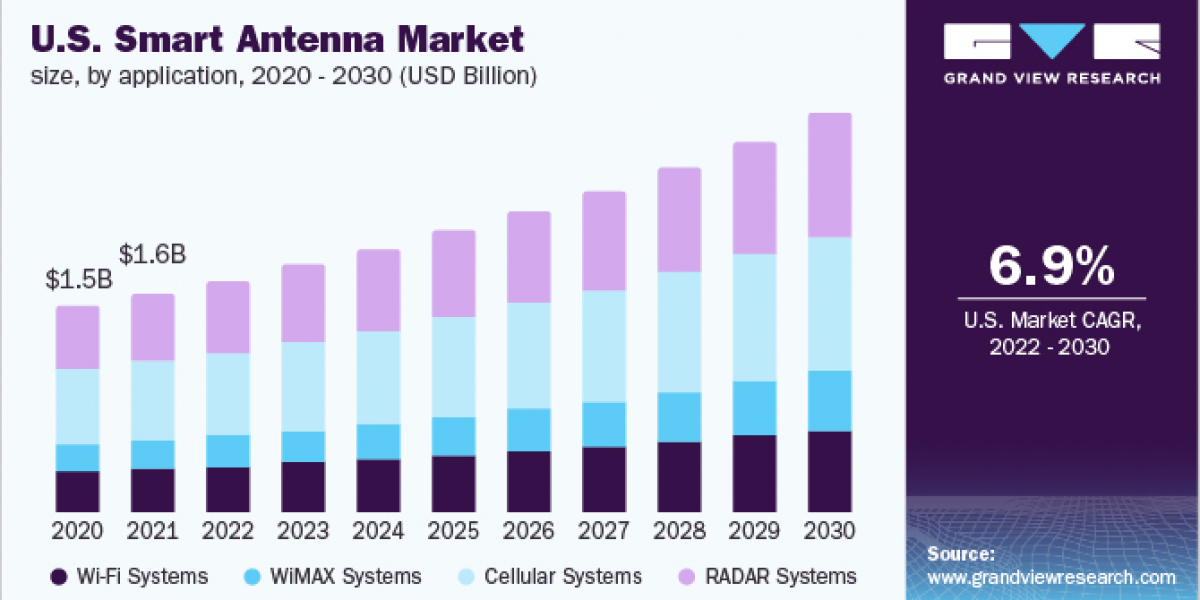The global smart antenna market was valued at USD 6.37 billion in 2021 and is projected to grow at a compound annual growth rate (CAGR) of 9.68% from 2022 to 2030. These advanced antennas are capable of receiving and decoding a wide range of signals accurately and without errors. The market is experiencing rapid growth due to the technology's ability to facilitate secure, high-speed two-way communication. As industries increasingly rely on swift communication, the demand for smart antennas is rising. The expansion of the market is further fueled by the integration of 5G millimeter-wave radio frequencies, which are essential in our digitally connected world, increasing the need for long-range, encrypted data transfer. This surge in demand is evident in both developed and developing countries.
Moreover, this market growth has opened up new opportunities for the manufacturing and maintenance of systems that ensure the longevity and reliability of these products. As a technically oriented industry, the development of smart antenna products is gradual and closely linked to advancements in technology. The primary focus of the market is the commercial sector, where the applications of smart antennas are extensive.
Gather more insights about the market drivers, restrains and growth of the Smart Antenna Market
Recently, smart antennas have found applications beyond traditional fields, significantly increasing their use cases worldwide. This widespread adoption has led to a strong dependency on smart antenna technology across various industries. In addition to mainstream sectors, the smart manufacturing market is also catering to niche industries. For example, in April 2022, Hemisphere GNSS entered into a distribution agreement with Volvo Construction Equipment to provide their new S631 GNSS smart antennas, which offer control and data transfer solutions tailored for construction companies.
Application Segmentation Insights
In 2021, the cellular systems segment represented the largest share of the market. The primary application of smart antennas lies within cellular systems, with other notable applications including RADAR, WiMAX, and Wi-Fi systems. Smart antennas utilize a cluster of input and output antennas to enhance both signal strength and quality, proving particularly effective in the deployment of 4G and 5G technologies.
The WiMAX segment is expected to exhibit the highest CAGR of 11.41% from 2022 to 2030. WiMAX technology provides operators with more flexible options for mobile and fixed communication systems. Additionally, smart antennas offer secure and long-range Wi-Fi solutions for homes, educational institutions, and businesses. They provide robust security measures for Wi-Fi connections, featuring both traditional and advanced multi-layer security options.
Order a free sample PDF of the Market Intelligence Study, published by Grand View Research.









